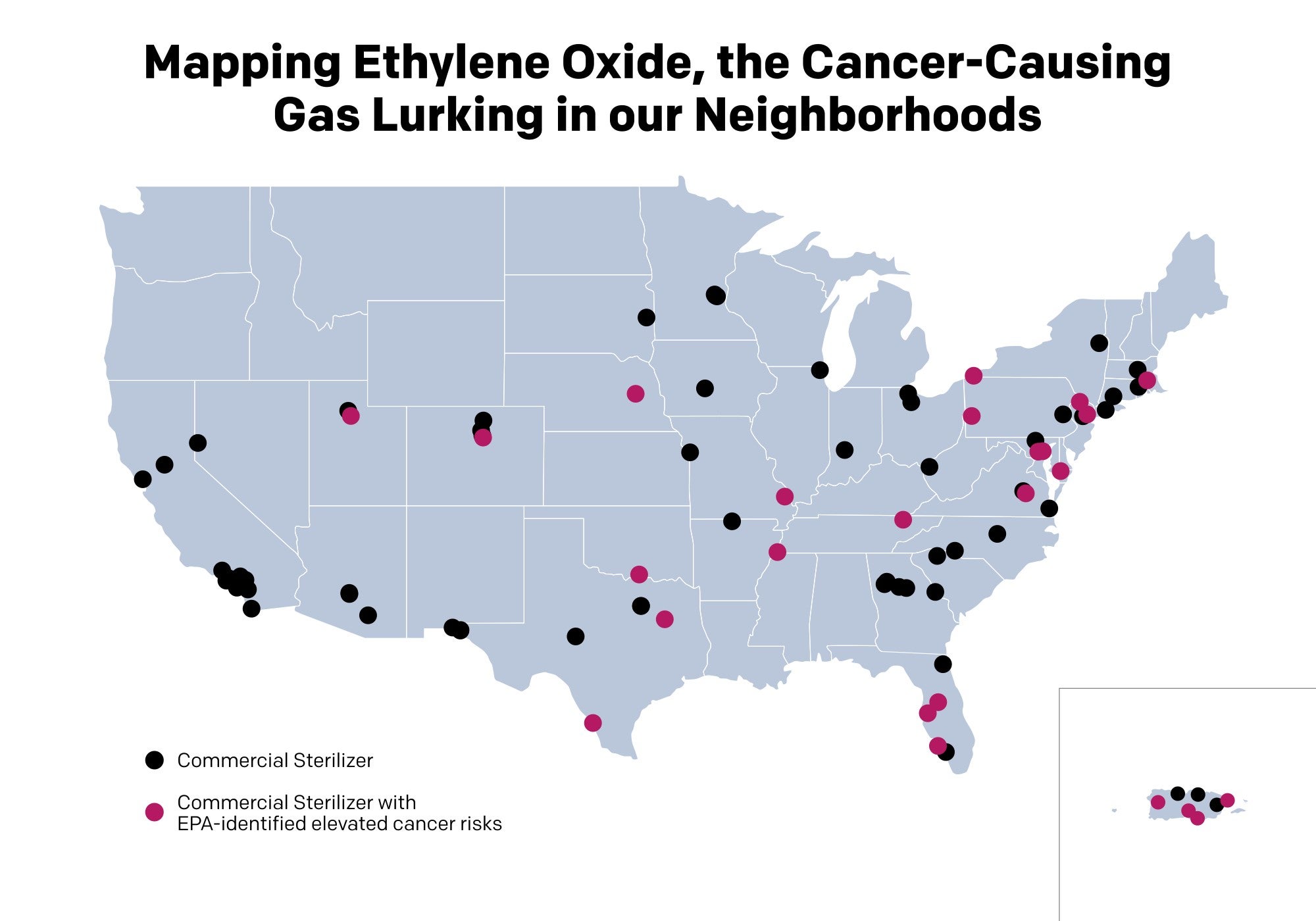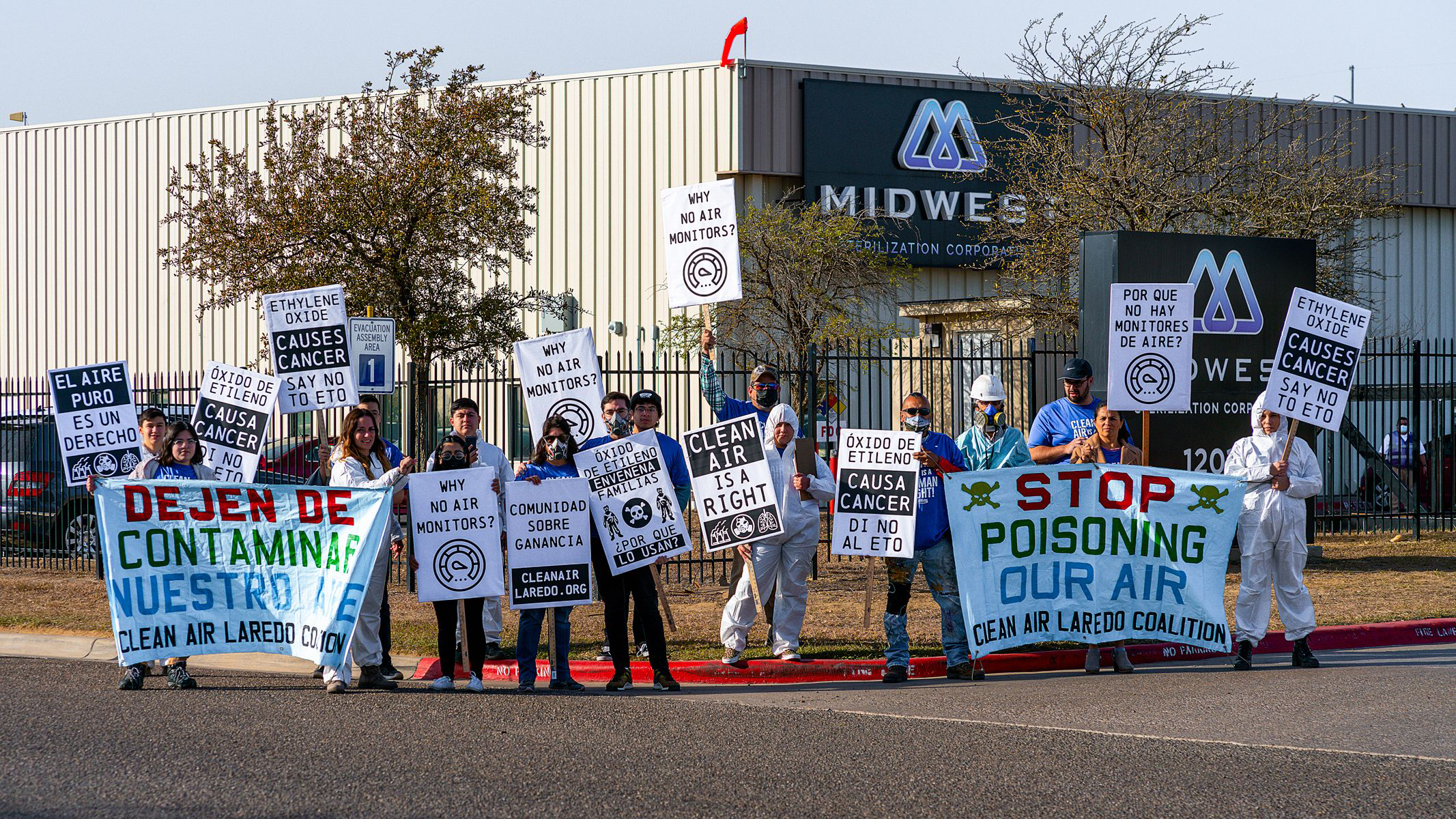Earthjustice goes to court for our planet.
We’re here because the earth needs a good lawyer.
Industry Is Trying to Weaken Regulations on Cancer-Causing Emissions
This page was published a year ago. Find the latest on Earthjustice’s work.
What happened: The Environmental Protection Agency (EPA) has finalized a rule for better regulating carcinogenic emissions from ethylene oxide commercial sterilization facilities. The rulemaking comes after years of pressure from Earthjustice’s community partners to halt cancer-causing emissions in their communities.
Why it matters: Commercial sterilizers use ethylene oxide to sterilize medical equipment and some dried food products. It is a known carcinogen to humans, especially when inhaled. EPA updated ethylene oxide’s toxicity value in 2016 and admits that the chemical is significantly more toxic than previously estimated. Nearly 14 million people in the United States and Puerto Rico live within five miles of a commercial sterilizer.
These regulations are a long overdue and much needed first step, but there is still a lot of work to do to ensure that communities have the full protection that they deserve from toxic ethylene oxide emissions.
How the new rule will reduce ethylene oxide emissions
- The rule will require sterilizer facilities to reduce emissions from both major and minor sources by installing control technology.
- According to the EPA, these regulations could eliminate an estimated 90% of ethylene oxide emissions once implemented.
Health impacts of ethylene oxide
- Ethylene oxide is a colorless, typically odorless, flammable gas used to sterilize medical equipment and as a base for chemicals that form antifreeze, plastics, detergents, and adhesives.
- One of the most toxic chemicals that the EPA regulates: Long-term exposure causes damage to the nervous system and increases people’s risk of developing cancer, leukemia, and other terminal illnesses.
- Communities at risk: Facilities that emit ethylene oxide are typically found in low-income neighborhoods and communities of color, many already grappling with elevated toxic exposure and health risks from multiple forms of industrial pollution.
- Cancer risk: In its latest risk assessment, the EPA found that registered uses of ethylene oxide present up to a 1 in 17 lifetime cancer risk for workers inside sterilization facilities, among the highest risks ever calculated.
EPA’s new rules are a response to pressure from Earthjustice lawsuits
- Under the Clean Air Act, the government must revise its air toxics standards for every category of polluting industry — including commercial sterilizers — every eight years. But the agency repeatedly missed its deadline to revise the commercial sterilizer rule; first in 2014 and again in April 2022.
- Lawsuit details: Earthjustice filed a lawsuit against the EPA over the agency’s failure to update standards to protect the public from harmful air emissions from ethylene oxide sterilization facilities, arguing that it was dodging its obligation under the Clean Air Act.
- Updated regulations matter: In the years that the EPA failed to revise its regulations on ethylene oxide, workers and communities have suffered from exposure to the chemical.
- More work to do: Earthjustice, along with our partners and clients, will continue to advocate for the EPA to monitor emissions at the facilities’ fencelines and to regulate off-site warehouses where sterilized stored products can emit ethylene oxide, too.
- The right to clean air should never be compromised by government inaction. Earthjustice uses the power of the courts to compel the government to reign in polluters who are poisoning our air and communities.

Ethylene oxide-emitting commercial sterilizer facilities in the United States. Sources: Esri, USGS, EPA, NOAA. (Casey Chin / Earthjustice)
